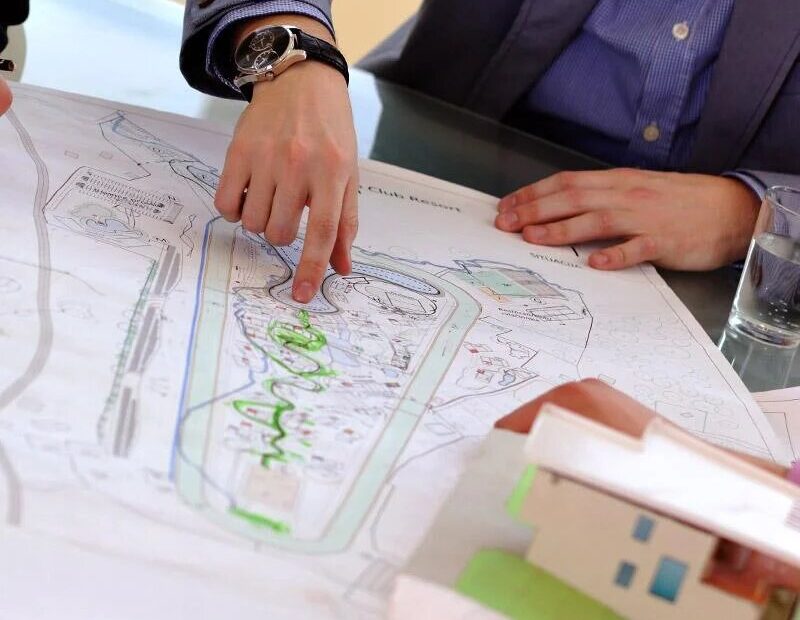Writing Project Proposals for Architects
If you’re an experienced architect, you’ve probably presented architectural project proposals to customers a million times already. And you are fully aware of how long and time-consuming this procedure may be. However, we chose to write an introduction article on this subject if you are just beginning your career in architecture. It encourages you to properly produce this document and prevents you from losing all of your professional excitement right away.
Important Elements of a Project Proposal for Architecture
All proposals typically involve the construction of new buildings in some way. Sample contracts are signed by the architect and the contractor.
It’s also important to note that this type of employment can help you earn decent money, showcase your abilities to create sustainable structures and gain design experience. And now for the important stuff: what details have to be in your architectural project proposal?
#1 Title Page
Keep in mind that the “meet on clothes” rule applies everywhere. Surprisingly, this rule holds for architectural project ideas as well as for individuals. The title page, which is the first item your potential client will view, is the example’s equivalent of the clothes. Therefore, pay careful attention to the design of the title page, but don’t go overboard, if you want to make the right impression right away.
The greatest option is minimalist design.
#2 Introduction
The introduction in the commercial proposition is seen by many marketers as only a formality. It is, but only if it is impersonal. An introduction is necessary for a personal document because it acts as a kind of instrument that compels the addressee to consider the facts you offer. Therefore, it is yet another important component of any project proposal, so you shouldn’t ignore it.
Additionally, if you work in a team, you must describe yourself (education, experience, and skills) or the company and its history. To provide potential clients with a clear understanding of your objectives to sign a contract, you then provide services and outline your goal and vision.
Additionally, this is where you lay out your proposal for the upcoming building project and explain how it will bring in money for everyone involved. Every detail in your project proposal has the potential to affect the client’s choice. So it makes sense to use the Trust My Paper writing service, where you can find a specialist to edit your work after you’ve written the document.
#3 Detailed Project Specification
It’s time to get into more information about the proposed building. The future object should ideally be described and visualized in great detail by the designer and the architect. Next, experts consider the big picture, calculate the size and arrangement of the rooms, and provide options for where to put window and door openings.
They also choose the essential materials, create auxiliary elements for the structure, calculate energy and heat consumption rates, and decide the inside and outside of the house (helping to minimize potential interior design errors). Additionally, since they offer revisions to make changes in the project’s final version, the customers’ requirements and suggestions directly influence the development of sketches.
#4 Procedure and Due Dates
It is clear from the title that you will outline the steps of the construction process and provide a thorough time estimate. It would be beneficial if you additionally instructed clients on how to carry out the task. You should do this by outlining a precise timeframe for the entire construction process.
It wouldn’t hurt to specify a period, say a year to two years, during the construction process. And you should accomplish this since without a completion date, it would be difficult to convince clients and investors to fund the project.
#5 Case Studies
It is crucial to conduct case study research for your assignment. This information, which is currently widely accessible, needs to be carefully compared with the project you’re interested in. Study the stark disparities between them to see what you can infer about how to do better research. In any case, after that, advise your clients of the conclusions, emphasizing both the positive and negative parts. It conveys to potential investors the value of your project.
#6 Securities and warrants
A two-way deal can be forged with potential clients through proposals. Since they will be investing their time and money in your project, you should give them a guarantee that it will be completed. It would be best to have contingency plans in place in case something doesn’t go as expected because it helps to avert potential issues.
#7 Price
Here is what we advise you to do for your greatest gain: put together a variety of pricing packages and give customers the option that best suits their needs. Regardless of the package they choose, clients get a variety of possibilities, and you make more money in this situation.
Additionally, it makes sense to charge more for the extra services you offer. To prevent ambiguous circumstances, you should simplify every aspect of your price list. Don’t be lazy; provide thorough justifications for each package so that buyers may choose wisely.
#8 Conditions
Therefore, you must outline the key terms and conditions for the project in the final paragraph of your project proposal. These terms and conditions should be suitable for both you and your clients. Keep in mind that every point should be fair to both parties equally. Consequently, it is reasonable to include the potential penalties in case of condition non-compliance. Keep in mind that the terms and conditions constitute a binding legal agreement between the architect and the client.
the conclusion
The best, if not the only, approach to appraise in advance and acquire a concept of the created thing is to create proposals for architectural projects. Large objects must go through this step since it avoids problems with various designs. This document enables them to showcase their abilities to clients, attract repeat business, and raise their income.
More on INJ Architects:

